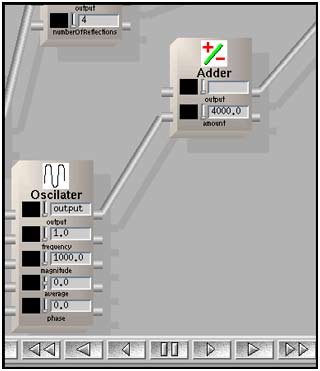| |
|

 |
| |
Obsidian
Next Generation Lightweight Application Infrastructure Software |
| |
| NEWS |
| September 18, 2005 |
|
A name change has been
effected because the previous intentionally misspelled
name, Xoneycomb, was the subject of way much humor, at
least on the part of some people who shall remain nameless
(but you know who you are :-) and
who just don't understand that an 'X' looks an awful lot like an 'H' -
and anyway it was hard for Google to find it with a phonetic
spelling.
|
| April 13, 2005 |
|
PROCESS |
|
The website is being
modified to be able to document the evolution of Obsidian. It
is anticipated that exposing the process of creation will be
of interest to a number of people.
The goal is to present the
ebb and flow of requirements/capabilities and the positive and
negative feedback these get from the design and implementation
process.
Similarly many of the
multitudinous designs will be evaluated as to their trade-offs
vis-à-vis requirements and implementation pressures, as well
as the overriding KISS principles - and how the decision was
made regarding the final design.
And finally implementation.
 TECHNICAL DETAILS...
TECHNICAL DETAILS... |
|
|
 |
| CAPABILITIES |
 |
 |
 |
Supports
innovative, aesthetic, fun, explorable user-interfaces |
 |
 |
 |
Manages
human-recognizable, application-friendly, evolution-capable,
100% persistent and versioned data and data structures |
 |
 |
 |
Full
in-the-field upgradeability, expandability, elasticity, and
longevity through a 3rd-party-friendly open-source plug-in
architecture |
 |
 |
 |
Contagious
robustness, simplicity and implementability |
 |
 |
 |
XML-driven |
 |
 |
 |
Java-implemented |
 |
 |
|
|
|
|
|
|
|
APPLICATION |
 |
|
The application we are writing on top of the Obsidian
Framework, whose name seems to change on a daily basis, is
a flexible content manager for individuals who want to see
and organize their data their way. |
|
|
|
|
|
|
|
|
|
|
|
|
|
 |
| HISTORY |
 |
|
Many frameworks have been
written in the past. Software Farm has also implemented
Obsidian-like frameworks many times before. First as VisualADE
(markup-driven GUI with event handling '91) and later as
Cadabra (markup-driven universal object model and GUI '95), both used commercially. And there were many
small, medium, and large-sized prototypes. Some of the experiences with these
will be referred to in the Process Tracks. And of course, Mica
will be one of the graphics frameworks supported by the
Obsidian Framework.
Why another attempt? Because
there is nothing out there that provides a solid foundation
for the next generation applications that, if we can assign
anthropomorphic descriptions to the vacuum their absence has
created, are begging to be
written.
Why will this succeed where
others keep failing? Because of all the KISSES. Keep it Simple
Stupid. Keep it Small Stupid. Keep it Standard Stupid. Keep it
uSable Stupid. |
| |
 |
|
|
|
